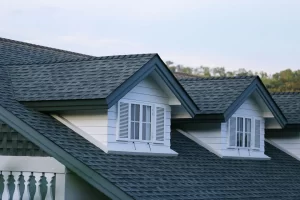Home Exteriors: Tips for Selecting Quality Finishes
When it comes to designing or renovating a home, the exterior is just as important as the interior. It’s the first impression your house gives to the world and plays a vital role in protecting your home from the elements. Choosing quality finishes for your home’s exterior isn’t just about aesthetics—it’s also about longevity, durability, and maintaining property value. The process may seem overwhelming at first, but with the right approach, it can be both manageable and enjoyable. Important source to guide you through energy-efficient upgrades for home exteriors.

Understanding the Climate Factor
One of the first things to consider when selecting finishes for your home exterior is the climate in which you live. Certain materials perform better in specific environments. For example, wood siding may be ideal in dry climates but can require extra maintenance in humid or rainy regions. On the other hand, fiber cement or vinyl siding can withstand a wider range of weather conditions with minimal upkeep. Similarly, the choice of paint or finish should be based on its ability to resist fading, cracking, or peeling due to sun exposure or temperature fluctuations.
In colder regions, frost and snow can cause expansion and contraction in building materials, so choosing finishes that are built to endure such conditions will save you future repair costs. In hotter zones, UV resistance is key to preventing discoloration and damage. Understanding the demands of your local weather can help narrow down materials that will perform well over time.
Balancing Aesthetics and Durability
While durability is key, appearance also matters. After all, the finishes you choose contribute greatly to your home’s curb appeal. It’s important to find materials that not only stand the test of time but also align with your personal style and the overall architectural design of the house. A modern home might look best with sleek metal finishes, while a cottage-style home might benefit from natural wood or stone accents.
The colors you choose should complement the design and surrounding landscape. Neutral tones tend to have more longevity in terms of style, while bolder shades can offer a unique personality. However, it’s always wise to consider how the color will age and whether it will still appeal to future buyers, should you ever decide to sell.
Texture also plays a role in visual interest. Mixing textures, like combining smooth stucco with rough stone, can create depth and character. However, it’s essential to do so thoughtfully so the end result feels cohesive rather than chaotic.
Evaluating Long-Term Maintenance Needs
Maintenance is an important factor many homeowners overlook when choosing exterior finishes. Every material has different upkeep requirements, and understanding what you’re committing to can make a big difference in satisfaction down the line. For instance, wood may need to be sealed or painted regularly to maintain its appearance and integrity. Brick may require occasional repointing of mortar joints, while vinyl is known for being low-maintenance.
Taking time to research or consult professionals about the upkeep of various materials can help you make informed decisions that suit your lifestyle. If you prefer low-maintenance options, modern synthetic materials or treated products can provide a great balance of visual appeal and practicality.
Considering Environmental Impact
Today’s homeowners are becoming increasingly conscious of their environmental footprint. Choosing eco-friendly exterior finishes not only benefits the planet but also enhances the energy efficiency and sustainability of your home. Options like recycled metal panels, reclaimed wood, and low-VOC paints can all contribute to a greener home design.
In addition to the materials themselves, it’s worth thinking about how your exterior finishes affect insulation and energy costs. High-quality finishes can provide an extra layer of protection that helps regulate indoor temperatures, reducing reliance on heating and cooling systems.
Investing in Quality Craftsmanship
No matter how good the materials are, the final result heavily depends on the quality of installation. Skilled craftsmanship ensures that materials are fitted properly, sealed correctly, and able to perform as intended. Poor installation can lead to issues like water intrusion, mold, and premature wear.
Choosing reputable contractors who have experience with the materials you’ve selected can provide peace of mind. Ask for examples of previous work, read reviews, and don’t hesitate to ask questions about the process and timeline. Sometimes, spending a bit more upfront on professional installation can prevent costly repairs in the future.
